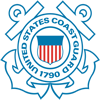Today marks the 36th anniversary of the wreck of the Edmund Fitzgerald, which was 730 feet (220 m) long and 75 feet (23 m) wide


Ever since I first heard the story, I was hooked and Intrigued. Upon more research I've found that I'm not the only one. So if anyone here is also,
I decided to dedicate a thread to the Fitz & any other shipwrecks throughout history.
Quick summary;
USCG Accident Report;
Timeline;
and of course;
and a few interesting links;


Ever since I first heard the story, I was hooked and Intrigued. Upon more research I've found that I'm not the only one. So if anyone here is also,
I decided to dedicate a thread to the Fitz & any other shipwrecks throughout history.
Quick summary;
November 10, 1975 the bulk freighter Edmund Fitzgerald sank in Lake Superior with all hands. This page is dedicated to the memory of the 29 men lost that night and the families they left behind.
The Fitzgerald cleared Superior, Wisconsin, on her last trip on November 9, 1975, with a cargo of 26,116 tons of taconite pellets consigned to Detroit. Traveling down Lake Superior in company with ARTHUR M. ANDERSON of the United States Steel Corporation's Great Lakes Fleet, she encountered heavy weather and in the early evening of November 10th, suddenly foundered approximately 17 miles from the entrance to Whitefish Bay (47º North Latitude, 85º 7' West Longitude)
Captain McSorley of the "FITZ" had indicated he was having difficulty and was taking on water. She was listing to port and had two of three ballast pumps working. She had lost her radar and damage was noted to ballast tank vent pipes and he was overheard on the radio saying, "don't allow nobody (sic) on deck." McSorley said it was the worst storm he had ever seen. All 29 officers and crew, including a Great Lakes Maritime Academy cadet, went down with the ship, which lies broken in two sections in 530 feet of water.
Lives lost;
Captain Ernest M. McSorley
Michael E. Armagost
Fred J. Beetcher
Thomas D. Bentsen
Edward F. Bindon
Thomas D. Borgeson
Oliver J. Champeau
Nolan S. Church
Ransom E. Cundy
Thomas E. Edwards
Russell G. Haskell
George J. Holl
Bruce L. Hudson
Allen G. Kalmon
Gorden Maclellan
Joseph Mazes
John H. McCarthy
Eugene O'Brien
Karl A. Peckol
John J. Poviach
James A. Pratt
Robert C. Rafferty
Paul M. Rippa
John D. Simmons
William J. Spengler
Mark A. Thomas
Ralph G. Walton
David E. Weiss
Blaine H. Wilhelm
The Fitzgerald cleared Superior, Wisconsin, on her last trip on November 9, 1975, with a cargo of 26,116 tons of taconite pellets consigned to Detroit. Traveling down Lake Superior in company with ARTHUR M. ANDERSON of the United States Steel Corporation's Great Lakes Fleet, she encountered heavy weather and in the early evening of November 10th, suddenly foundered approximately 17 miles from the entrance to Whitefish Bay (47º North Latitude, 85º 7' West Longitude)
Captain McSorley of the "FITZ" had indicated he was having difficulty and was taking on water. She was listing to port and had two of three ballast pumps working. She had lost her radar and damage was noted to ballast tank vent pipes and he was overheard on the radio saying, "don't allow nobody (sic) on deck." McSorley said it was the worst storm he had ever seen. All 29 officers and crew, including a Great Lakes Maritime Academy cadet, went down with the ship, which lies broken in two sections in 530 feet of water.
Lives lost;
Captain Ernest M. McSorley
Michael E. Armagost
Fred J. Beetcher
Thomas D. Bentsen
Edward F. Bindon
Thomas D. Borgeson
Oliver J. Champeau
Nolan S. Church
Ransom E. Cundy
Thomas E. Edwards
Russell G. Haskell
George J. Holl
Bruce L. Hudson
Allen G. Kalmon
Gorden Maclellan
Joseph Mazes
John H. McCarthy
Eugene O'Brien
Karl A. Peckol
John J. Poviach
James A. Pratt
Robert C. Rafferty
Paul M. Rippa
John D. Simmons
William J. Spengler
Mark A. Thomas
Ralph G. Walton
David E. Weiss
Blaine H. Wilhelm
USCG Accident Report;
Timeline;
November 9
8:30 AM
The Edmund Fitzgerald is loaded with taconite pellets at Burlington Northern Railroad, Dock 1. The ship is scheduled to transport the cargo to Zug Island on the Detroit River.
2:20 PM
The Fitzgerald departs Lake Superior en route of Detroit with 26,116 tons of taconite pellets.
2:39 PM
The National Weather Service issues gale warnings for the area which the Fitzgerald is sailing in. Captain Cooper on the Anderson radios a freighter (the Edmund Fitzgerald) that he spots.
4:15 PM
The Fitzgerald spots the Arthur M. Anderson some 15 miles behind it.
November 10
1:00 AM
Weather report from the Fitzgerald.
The report from the Fitzgerald shows her to be 20 miles south of Isle Royale. Winds are at 52 knots, with waves ten feet in height.
7:00 AM
Weather report from the Fitzgerald.
Winds are at 35 knots, waves of ten feet. This is the last weather report that the Edmund Fitzgerald will ever make.
3:15 PM
Captain Jesse Cooper, (J.C.) of the S.S. Arthur M. Anderson watches the Fitzgerald round Caribou Island and comments that the Fitzgerald is much closer to Six Fathom Shoal than he would want to be.
3:20 PM
Anderson reports winds coming from the Northwest at 43 knots.
3:30 PM
Radio transmission between the Fitzgerald and the Anderson
Captain McSorley (C.M.) to Captain Cooper (C.C.):
C.M.: "Anderson, this is the Fitzgerald. I have sustained some topside damage. I have a fence rail laid down, two vents lost or damaged, and a list. I'm checking down. Will you stay by me til I get to Whitefish?"
C.C.: "Charlie on that Fitzgerald. Do you have your pumps going?"
C.M.: "Yes, both of them
4:10 PM
The Fitzgerald radios the Arthur M. Anderson requesting radar assistance for the remainder of the voyage.
Fitzgerald: "Anderson, this is the Fitzgerald. I have lost both radars. Can you provide me with radar plots till we reach Whitefish Bay?"
Anderson: "Charlie on that, Fitzgerald. We'll keep you advised of position."
About 4:39 PM
The Fitzgerald cannot pick up the Whitefish Point radio beacon. The Fitzgerald radios the Coast Guard station at Grand Marais on Channel 16, the emergency channel.
Between 4:30 and 5:00 PM
The Edmund Fitzgerald calls for any vessel in the Whitefish Point area regarding information about the beacon and light at Whitefish Point. They receive an answer by the saltwater vessel Avafors that the beacon and the light are not operating.
Estimated between 5:30 and 6:00 PM
Radio transmission between the Avafors and the Fitzgerald.
Avafors: "Fitzgerald, this is the Avafors. I have the Whitefish light now but still am receiving no beacon. Over."
Fitzgerald: "I'm very glad to hear it."
Avafors: "The wind is really howling down here. What are the conditions where you are?"
Fitzgerald: (Undiscernable shouts heard by the Avafors.) "DON'T LET NOBODY ON DECK!"
Avafors: "What's that, Fitzgerald? Unclear. Over."
Fitzgerald: "I have a bad list, lost both radars. And am taking heavy seas over the deck. One of the worst seas I've ever been in."
Avafors: "If I'm correct, you have two radars."
Fitzgerald: "They're both gone."
Sometime around 7:00 PM
The Anderson is struck by two huge waves that put water on the ship, 35 feet above the water line. The waves hit with enough force to push the starboard lifeboat down, damaging the bottom.
7:10 PM
Radio transmission between the Anderson and the Fitzgerald. The Fitzgerald is still being followed by the Arthur M. Anderson. They are about 10 miles behind the Fitzgerald.
Anderson: "Fitzgerald, this is the Anderson. Have you checked down?"
Fitzgerald: "Yes we have."
Anderson: "Fitzgerald, we are about 10 miles behind you, and gaining about 1 1/2 miles per hour. Fitzgerald, there is a target 19 miles ahead of us. So the target would be 9 miles on ahead of you."
Fitzgerald: "Well, am I going to clear?"
Anderson: "Yes. He is going to pass to the west of you."
Fitzgerald: "Well, fine."
Anderson: "By the way, Fitzgerald, how are you making out with your problem?"
Fitzgerald: "We are holding our own."
Anderson: "Okay, fine. I'll be talking to you later."
They never did speak later...The 29 men onboard the Fitzgerald will never again speak with anyone outside of the ship.
Sometime between 7:20 and 7:30 PM
It is estimated that this was the time period when the ship vanished and sank.
7:15 PM
The Fitzgerald enters a squall while still on Lake Superior; the squall obscures the vessel from radar observation by the Anderson; this is normal when in a squall.
7:25 PM
Edmund Fitzgerald disappears from the radar of the S.S. Arthur M. Anderson, prompting a call to the Coast Guard to inform them of the situation.
7:55 PM
The Anderson calls again and informs the Coast Guard that they have lost the Fitzgerald both visually and on radar.
9:00 PM
The Coast Guard, with no available search ships, radios the Arthur M. Anderson requesting assistance.
C.G.: "Anderson, this is Group Soo. What is your present position?"
Anderson: "We're down here, about two miles off Parisienne Island right now... the wind is northwest forty to forty-five miles here in the bay."
C.G.: "Is it calming down at all, do you think?"
Anderson: "In the bay it is, but I heard a couple of the salties talking up there, and they wish they hadn't gone out."
After much more conversation and a request by the Coast Guard to return to search for the ship, reluctant to go out, the S.S. Arthur M. Anderson agrees to "give it a try" but claims that that is "all we can do."
8:30 AM
The Edmund Fitzgerald is loaded with taconite pellets at Burlington Northern Railroad, Dock 1. The ship is scheduled to transport the cargo to Zug Island on the Detroit River.
2:20 PM
The Fitzgerald departs Lake Superior en route of Detroit with 26,116 tons of taconite pellets.
2:39 PM
The National Weather Service issues gale warnings for the area which the Fitzgerald is sailing in. Captain Cooper on the Anderson radios a freighter (the Edmund Fitzgerald) that he spots.
4:15 PM
The Fitzgerald spots the Arthur M. Anderson some 15 miles behind it.
November 10
1:00 AM
Weather report from the Fitzgerald.
The report from the Fitzgerald shows her to be 20 miles south of Isle Royale. Winds are at 52 knots, with waves ten feet in height.
7:00 AM
Weather report from the Fitzgerald.
Winds are at 35 knots, waves of ten feet. This is the last weather report that the Edmund Fitzgerald will ever make.
3:15 PM
Captain Jesse Cooper, (J.C.) of the S.S. Arthur M. Anderson watches the Fitzgerald round Caribou Island and comments that the Fitzgerald is much closer to Six Fathom Shoal than he would want to be.
3:20 PM
Anderson reports winds coming from the Northwest at 43 knots.
3:30 PM
Radio transmission between the Fitzgerald and the Anderson
Captain McSorley (C.M.) to Captain Cooper (C.C.):
C.M.: "Anderson, this is the Fitzgerald. I have sustained some topside damage. I have a fence rail laid down, two vents lost or damaged, and a list. I'm checking down. Will you stay by me til I get to Whitefish?"
C.C.: "Charlie on that Fitzgerald. Do you have your pumps going?"
C.M.: "Yes, both of them
4:10 PM
The Fitzgerald radios the Arthur M. Anderson requesting radar assistance for the remainder of the voyage.
Fitzgerald: "Anderson, this is the Fitzgerald. I have lost both radars. Can you provide me with radar plots till we reach Whitefish Bay?"
Anderson: "Charlie on that, Fitzgerald. We'll keep you advised of position."
About 4:39 PM
The Fitzgerald cannot pick up the Whitefish Point radio beacon. The Fitzgerald radios the Coast Guard station at Grand Marais on Channel 16, the emergency channel.
Between 4:30 and 5:00 PM
The Edmund Fitzgerald calls for any vessel in the Whitefish Point area regarding information about the beacon and light at Whitefish Point. They receive an answer by the saltwater vessel Avafors that the beacon and the light are not operating.
Estimated between 5:30 and 6:00 PM
Radio transmission between the Avafors and the Fitzgerald.
Avafors: "Fitzgerald, this is the Avafors. I have the Whitefish light now but still am receiving no beacon. Over."
Fitzgerald: "I'm very glad to hear it."
Avafors: "The wind is really howling down here. What are the conditions where you are?"
Fitzgerald: (Undiscernable shouts heard by the Avafors.) "DON'T LET NOBODY ON DECK!"
Avafors: "What's that, Fitzgerald? Unclear. Over."
Fitzgerald: "I have a bad list, lost both radars. And am taking heavy seas over the deck. One of the worst seas I've ever been in."
Avafors: "If I'm correct, you have two radars."
Fitzgerald: "They're both gone."
Sometime around 7:00 PM
The Anderson is struck by two huge waves that put water on the ship, 35 feet above the water line. The waves hit with enough force to push the starboard lifeboat down, damaging the bottom.
7:10 PM
Radio transmission between the Anderson and the Fitzgerald. The Fitzgerald is still being followed by the Arthur M. Anderson. They are about 10 miles behind the Fitzgerald.
Anderson: "Fitzgerald, this is the Anderson. Have you checked down?"
Fitzgerald: "Yes we have."
Anderson: "Fitzgerald, we are about 10 miles behind you, and gaining about 1 1/2 miles per hour. Fitzgerald, there is a target 19 miles ahead of us. So the target would be 9 miles on ahead of you."
Fitzgerald: "Well, am I going to clear?"
Anderson: "Yes. He is going to pass to the west of you."
Fitzgerald: "Well, fine."
Anderson: "By the way, Fitzgerald, how are you making out with your problem?"
Fitzgerald: "We are holding our own."
Anderson: "Okay, fine. I'll be talking to you later."
They never did speak later...The 29 men onboard the Fitzgerald will never again speak with anyone outside of the ship.
Sometime between 7:20 and 7:30 PM
It is estimated that this was the time period when the ship vanished and sank.
7:15 PM
The Fitzgerald enters a squall while still on Lake Superior; the squall obscures the vessel from radar observation by the Anderson; this is normal when in a squall.
7:25 PM
Edmund Fitzgerald disappears from the radar of the S.S. Arthur M. Anderson, prompting a call to the Coast Guard to inform them of the situation.
7:55 PM
The Anderson calls again and informs the Coast Guard that they have lost the Fitzgerald both visually and on radar.
9:00 PM
The Coast Guard, with no available search ships, radios the Arthur M. Anderson requesting assistance.
C.G.: "Anderson, this is Group Soo. What is your present position?"
Anderson: "We're down here, about two miles off Parisienne Island right now... the wind is northwest forty to forty-five miles here in the bay."
C.G.: "Is it calming down at all, do you think?"
Anderson: "In the bay it is, but I heard a couple of the salties talking up there, and they wish they hadn't gone out."
After much more conversation and a request by the Coast Guard to return to search for the ship, reluctant to go out, the S.S. Arthur M. Anderson agrees to "give it a try" but claims that that is "all we can do."
and of course;
and a few interesting links;









Comment